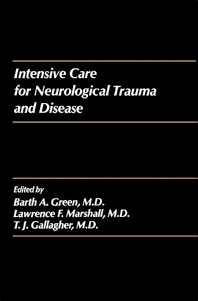Books in Neuroscience
Elsevier's Neuroscience collection empowers educators, researchers, and students with actionable knowledge to drive collaborative research and advancements in the field. Content covers the nervous system's intricate workings, covering branches like Affective, Behavioral, and Cognitive neuroscience to investigate the neural basis of emotions, behavior, and cognitive functions. Spanning from Molecular and Cellular Neuroscience to Developmental Neuroscience, content provides insights into brain function in health and disease.
- 1st Edition
- October 22, 2013
- John Carew Eccles
- English
- Paperback9 7 8 1 4 8 3 2 1 2 6 3 0
- Hardback9 7 8 1 4 8 3 2 0 1 0 3 0
- eBook9 7 8 1 4 8 3 2 2 6 0 6 4

The Physiology of Synapses
- 2nd Edition
- October 22, 2013
- Arthur Weil
- English
- Paperback9 7 8 1 4 8 3 2 1 2 5 3 1
- Hardback9 7 8 1 4 8 3 2 0 0 9 3 4
- eBook9 7 8 1 4 8 3 2 2 5 9 6 8

Textbook of Neuropathology
- 1st Edition
- October 22, 2013
- David J. Beintema
- English
- Paperback9 7 8 1 4 8 3 2 0 8 6 9 5
- Hardback9 7 8 1 4 8 3 1 9 7 0 9 8
- eBook9 7 8 1 4 8 3 2 2 2 1 2 7

A Neurological Study of Newborn Infants
- 1st Edition
- October 22, 2013
- Barth A. Green + 2 more
- English
- Hardback9 7 8 0 1 2 7 8 8 2 8 4 0
- Paperback9 7 8 1 4 8 3 2 4 8 9 6 7
- eBook9 7 8 1 4 8 3 2 7 3 7 1 6

Intensive Care for Neurological Trauma and Disease
- 1st Edition
- October 22, 2013
- J Bickerton + 1 more
- English
- Paperback9 7 8 0 4 3 3 0 2 8 3 0 7
- eBook9 7 8 1 4 8 3 1 4 1 5 5 8

Neurology for Nurses
- 1st Edition
- October 22, 2013
- Yu. E. Moskalenko + 2 more
- English
- Paperback9 7 8 1 4 8 3 1 2 3 4 0 0
- Hardback9 7 8 0 0 8 0 2 2 6 7 2 9
- eBook9 7 8 1 4 8 3 1 5 5 8 2 1

Biophysical Aspects of Cerebral Circulation
- 1st Edition
- October 22, 2013
- Nicolas G. Bazan + 1 more
- English
- Paperback9 7 8 1 4 8 3 1 7 3 7 3 3
- eBook9 7 8 1 4 8 3 1 8 9 5 4 3

Neurochemistry of the Retina
- 1st Edition
- October 22, 2013
- L. Van Bogaert + 1 more
- English
- Paperback9 7 8 1 4 8 3 1 7 8 4 4 8
- eBook9 7 8 1 4 8 3 1 9 4 2 5 7

Neuropathology
- 1st Edition
- October 22, 2013
- Alfred Kestenbaum
- English
- Paperback9 7 8 1 4 8 3 2 1 2 0 6 7
- Hardback9 7 8 1 4 8 3 2 0 0 4 6 0
- eBook9 7 8 1 4 8 3 2 2 5 4 9 4

Clinical Methods of Neuro-Ophthalmologic Examination
- 1st Edition
- October 22, 2013
- G. B. Ansell
- English
- Paperback9 7 8 0 0 8 0 1 1 4 2 8 6
- eBook9 7 8 1 4 8 3 1 3 8 6 6 4

Variation in Chemical Composition of the Nervous System
Related subjects
Behavioral neuroscience
Cognitive neuroscience
Developmental neuroscience and regeneration
Molecular neuroscience
Neural aging
Neuroanatomy
Neurobiology
Neurochemistry
Neuroendocrinology
Neurogenetics
Neuroimmunology
Neurology
Neuropathology
Neuropharmacology
Neurophysiology
Neuroscience general
Neuroscience methodology
Neurotoxicology
Sensory systems